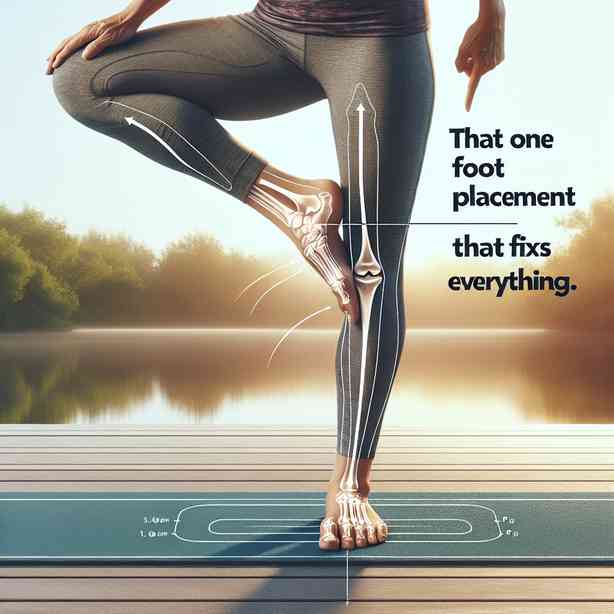
Understanding the significance of proper foot placement can be a game-changer, not just in sports but in daily life. The way our feet connect with the ground influences our balance, posture, and overall body mechanics. In this detailed exploration, we will examine the principles behind foot placement and how a single adjustment can enhance stability, reduce injury risk, and improve overall performance across various activities.
Firstly, let’s discuss the fundamental role of foot placement in balance. Our feet serve as the foundation of our body’s structural alignment. When placed correctly, they stabilize the entire kinetic chain, allowing for efficient force transfer from the ground up through the legs, hips, and into the core. This stability becomes particularly important during dynamic movements, such as running, jumping, or engaging in weightlifting. An optimal foot position can help distribute the weight evenly, ensuring that no single joint is overly stressed, which can lead to injuries over time.
One critical aspect of foot placement is the alignment of the toes. Ideally, when we stand, our toes should point forward or slightly outward, allowing for a natural stance. This alignment promotes better weight distribution across the foot and leg, enhancing overall stability. In contrast, if the toes angle inwards (a condition known as “toe-in” or “pigeon-toed”), it can create imbalances that increase the risk of ankle sprains and knee injuries, as the body struggles to maintain equilibrium. Therefore, a simple adjustment in toe alignment can lead to vast improvements in balance and stability.
Furthermore, the width of one’s foot placement is equally vital. Standing with feet too close together can compromise stability, while too wide can lead to excessive tension in the hips and lower back. The ideal stance width can vary from person to person, influenced by factors such as body type and flexibility. A general guideline is to align the feet approximately shoulder-width apart, which allows for optimal balance and a solid base of support.
Let’s consider the importance of arch support in foot placement. Our foot’s arch serves a crucial purpose in absorbing shock and distributing pressure. Individuals with flat feet or high arches may need to pay particular attention to their foot placement, as poor alignment can lead to discomfort and injury. Utilizing arch supports or orthotic devices can provide the necessary support and help maintain proper foot alignment, thus enhancing performance during physical activities.
Another critical factor in foot placement is the distribution of weight across the foot’s surface. When standing, engaging the muscles in the feet and legs can help create a stable base. This tension allows for better control and movement, whether in a static position or during dynamic actions. Regularly practicing foot exercises, such as toe curls or arch lifts, can help strengthen these muscles, thereby reinforcing proper foot placement.
In the realm of sports, successful athletes often emphasize the importance of footwork. A significant part of their training involves honing foot placement skills to enhance agility and speed. For instance, in basketball, players need to position their feet correctly to maintain balance while executing quick pivots and direction changes. The ability to adjust one’s foot placement quickly can mean the difference between making a successful play or getting caught off-guard.
For those engaged in weightlifting or strength training, proper foot placement is crucial for executing lifts safely and effectively. Incorrect foot positioning can lead to improper lifting techniques, increasing the risk of injury. For example, during a squat, the feet should be planted firmly on the ground, with weight distributed evenly across the entire foot. Keeping the knees aligned with the toes is essential to prevent strain on the ligaments and tendons. Athletes should focus on foot placement not only for safety but to maximize the effectiveness of their lifts.
Moreover, foot placement plays a role in rehabilitation and the prevention of injuries. Physical therapists often emphasize the significance of correct alignment and distribution of weight when helping patients recover from injuries. By understanding how foot placement affects movement patterns, patients can learn to adjust their posture and mechanics, preventing future injuries and promoting long-term health.
For those who spend long hours on their feet, whether in a professional capacity or during recreational activities, foot placement can impact comfort levels significantly. Shoes that provide ample support and maintain proper foot alignment are essential for reducing fatigue. Additionally, incorporating breaks to shift weight and perform stretches can alleviate tension and promote better foot health.
Incorporating proper foot placement into daily activities can be particularly beneficial for individuals who are aware of the physical demands on their bodies. Simple awareness of how one stands, walks, and engages in physical activity can lead to significant improvements in overall health and performance. For instance, practicing mindfulness regarding one’s posture and foot alignment while sitting at a desk can encourage healthier habits.
As we wrap up this discussion, it’s clear that that one foot placement that fixes everything is about more than just positioning the feet correctly; it encompasses understanding body mechanics, enhancing stability, and preventing injuries. By paying attention to how our feet connect with the ground, we can optimize our performance in sports, improve our daily activities, and promote long-term health.
Implementing these principles into your routine can yield incredible results. Whether you are an athlete striving for peak performance or someone looking for comfort in everyday life, optimizing foot placement should be an essential focus. Regularly assess your posture, invest in supportive footwear, and engage in exercises that promote foot strength. In doing so, you will create a solid foundation for a healthier, more active lifestyle.


